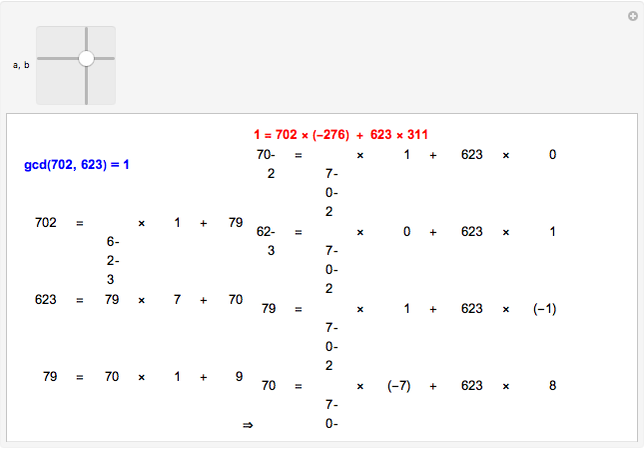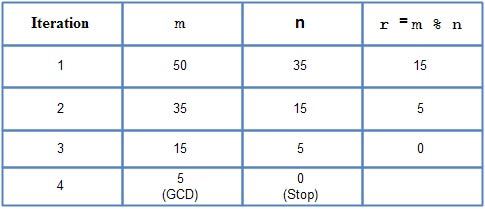The extended Euclidean algorithm is an efficient method for finding the greatest common divisor (GCD) of two integers, as well as finding integers that satisfy the equation
ax + by = gcd(a, b)
where a and b are the input integers and x and y are the integers we wish to find. This equation is known as the Bézout's identity, and the integers x and y are known as Bézout coefficients. The extended Euclidean algorithm can be implemented in any programming language, and in this essay, we will discuss an implementation in the C programming language.
To begin, let's consider the basic Euclidean algorithm for finding the GCD of two integers. The algorithm works by repeatedly applying the division algorithm until the remainder is 0, at which point the divisor is the GCD. For example, to find the GCD of 24 and 16, we can perform the following steps:
24 / 16 = 1 remainder 8 16 / 8 = 2 remainder 0
Therefore, the GCD of 24 and 16 is 8.
The extended Euclidean algorithm builds upon this basic algorithm by also keeping track of the Bézout coefficients as the algorithm progresses. We can do this by using a recursive function that takes in the two input integers and two variables for the Bézout coefficients. Let's call this function extendedEuclidean().
Here is the basic outline of the extended Euclidean algorithm implemented in C:
int extendedEuclidean(int a, int b, int *x, int *y) {
if (a == 0) {
*x = 0;
*y = 1;
return b;
}
int gcd = extendedEuclidean(b % a, a, y, x);
*y -= (b / a) * (*x);
return gcd;
}
The function takes in the two input integers a and b, as well as pointers to the variables x and y that will be used to store the Bézout coefficients. The function first checks if a is 0, in which case it sets x to 0, y to 1, and returns b. This is the base case of the recursive function, and it allows the algorithm to terminate when the remainder is 0.
If a is not 0, the function calls itself with the arguments b % a and a, and assigns the result to the variable gcd. The function then subtracts (b / a) * x from y and returns gcd.
This may seem a bit confusing at first, so let's walk through an example to see how the algorithm works. Let's find the GCD of 24 and 16, as well as the Bézout coefficients, using the extended Euclidean algorithm.
We start by calling extendedEuclidean(24, 16, x, y). Since a is not 0, the function calls itself with the arguments extendedEuclidean(16, 24, y, x). This call returns the GCD of 16 and 24, as well as the Bézout coefficients y and x.
The function then calls itself with the arguments extendedEuclidean(8, 16, y, x). This call returns the GCD of 8 and 16, as well as the Bézout coefficients








